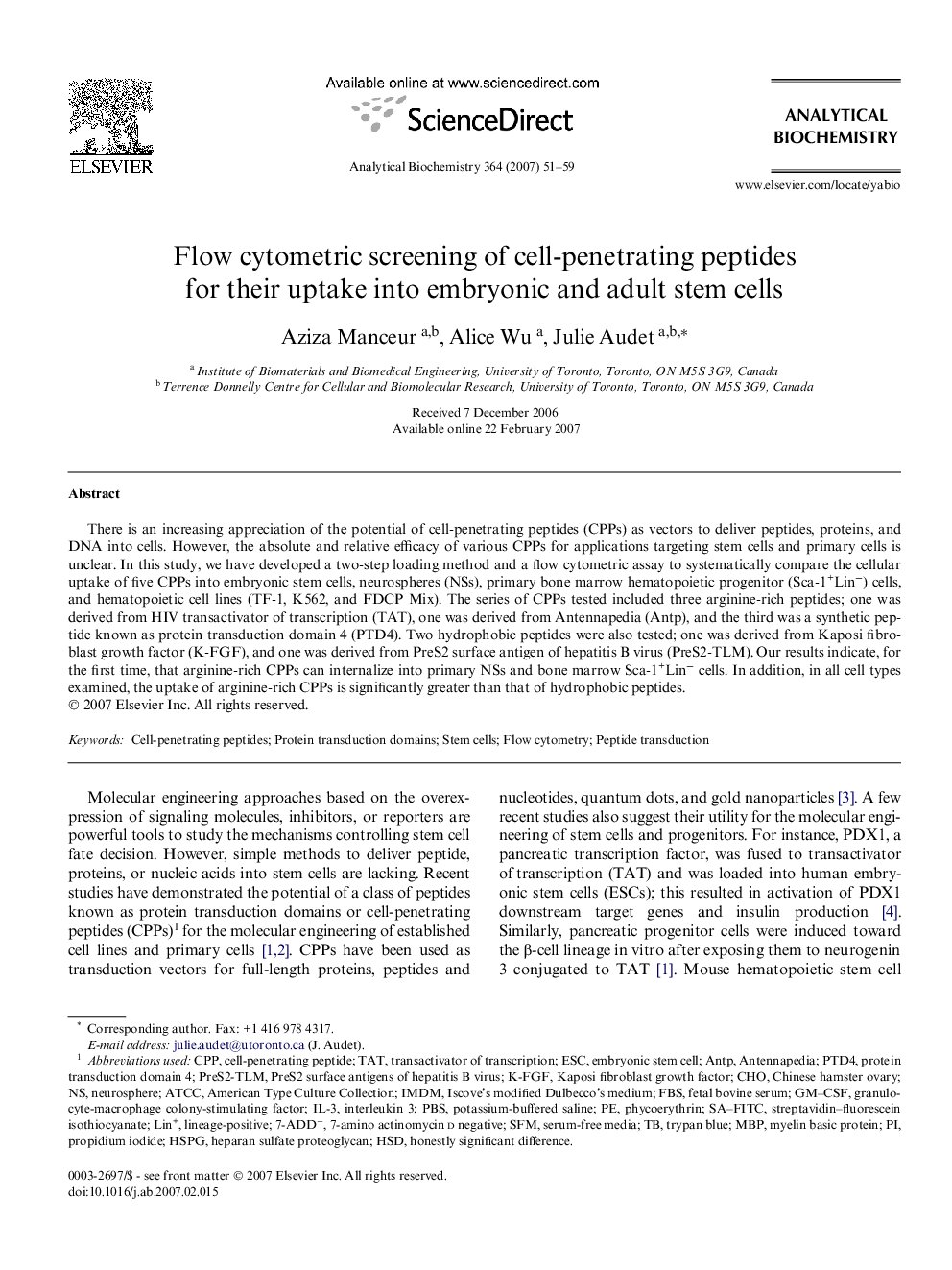| Article ID | Journal | Published Year | Pages | File Type |
|---|---|---|---|---|
| 1175397 | Analytical Biochemistry | 2007 | 9 Pages |
There is an increasing appreciation of the potential of cell-penetrating peptides (CPPs) as vectors to deliver peptides, proteins, and DNA into cells. However, the absolute and relative efficacy of various CPPs for applications targeting stem cells and primary cells is unclear. In this study, we have developed a two-step loading method and a flow cytometric assay to systematically compare the cellular uptake of five CPPs into embryonic stem cells, neurospheres (NSs), primary bone marrow hematopoietic progenitor (Sca-1+Lin−) cells, and hematopoietic cell lines (TF-1, K562, and FDCP Mix). The series of CPPs tested included three arginine-rich peptides; one was derived from HIV transactivator of transcription (TAT), one was derived from Antennapedia (Antp), and the third was a synthetic peptide known as protein transduction domain 4 (PTD4). Two hydrophobic peptides were also tested; one was derived from Kaposi fibroblast growth factor (K-FGF), and one was derived from PreS2 surface antigen of hepatitis B virus (PreS2-TLM). Our results indicate, for the first time, that arginine-rich CPPs can internalize into primary NSs and bone marrow Sca-1+Lin− cells. In addition, in all cell types examined, the uptake of arginine-rich CPPs is significantly greater than that of hydrophobic peptides.
